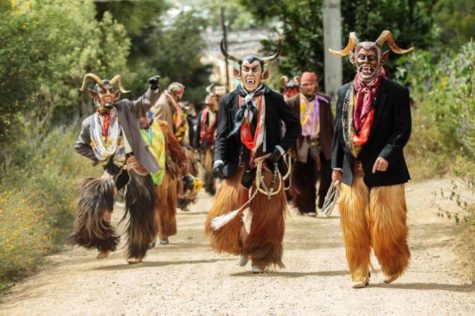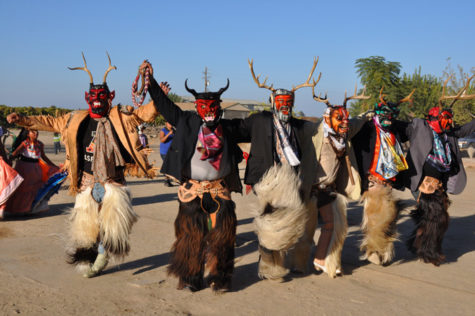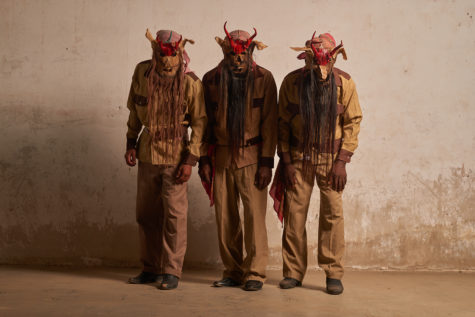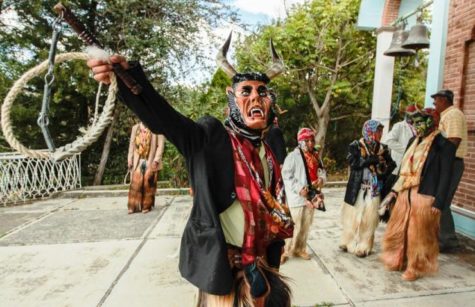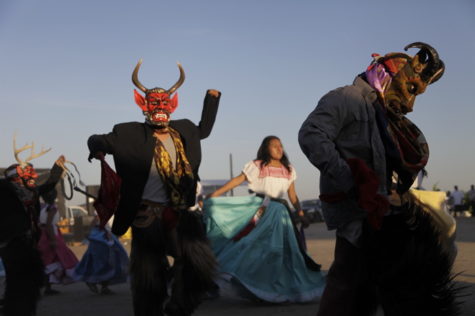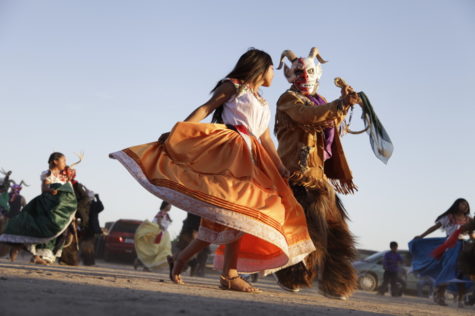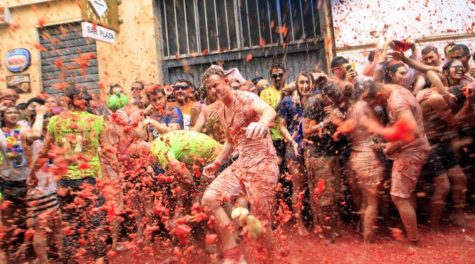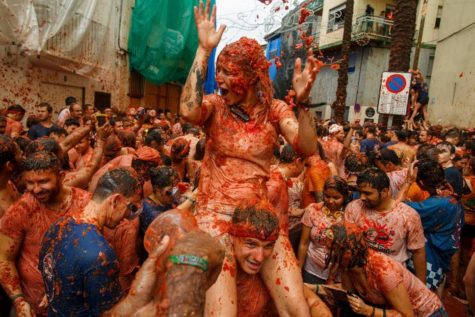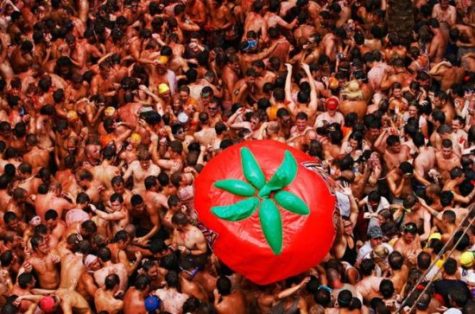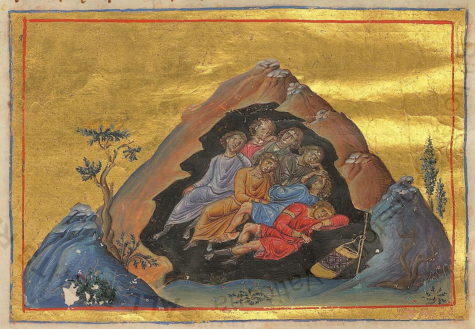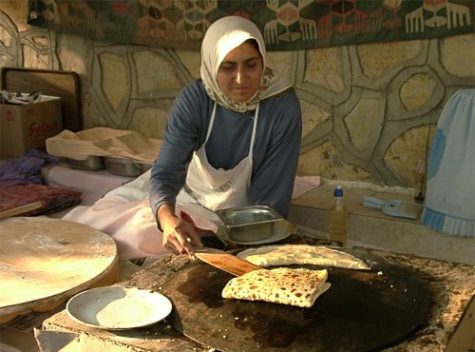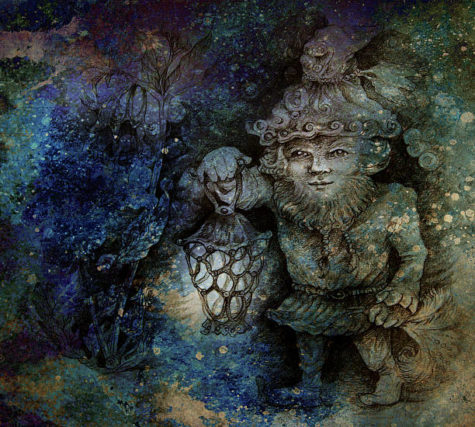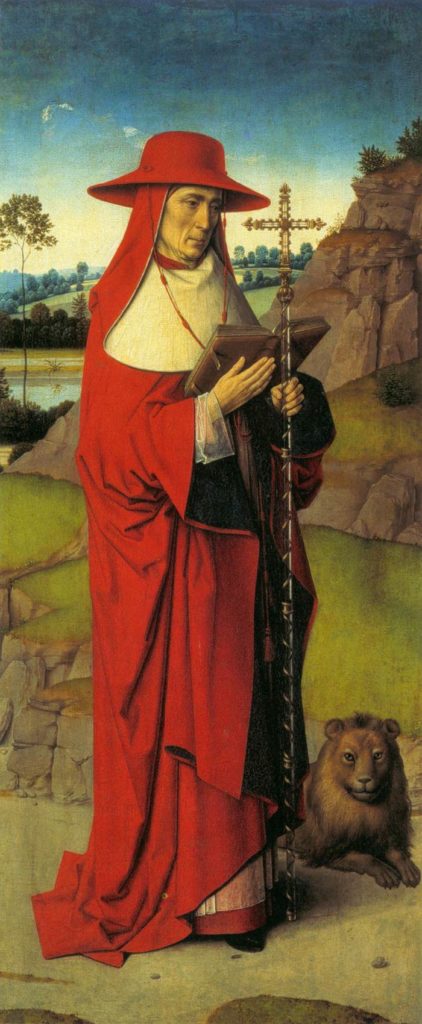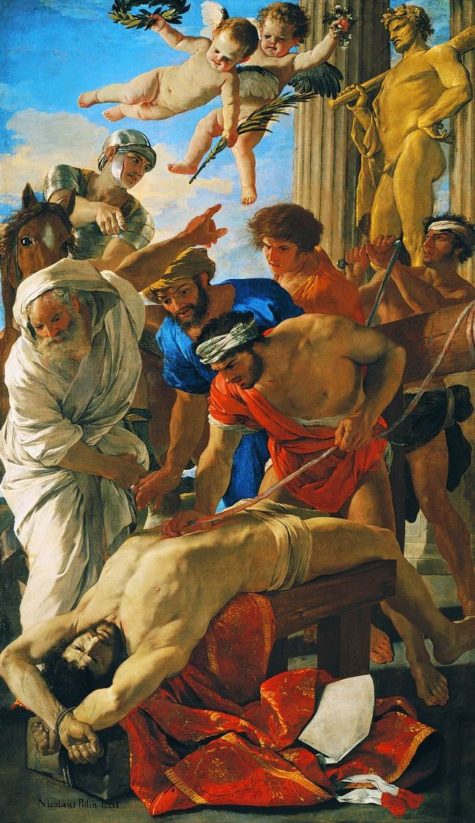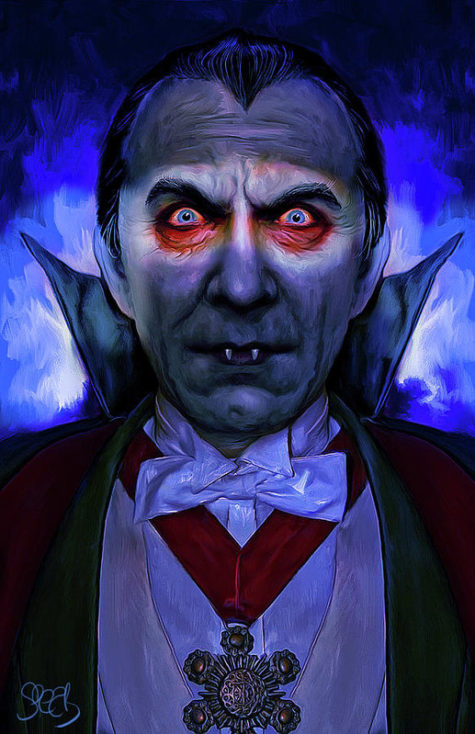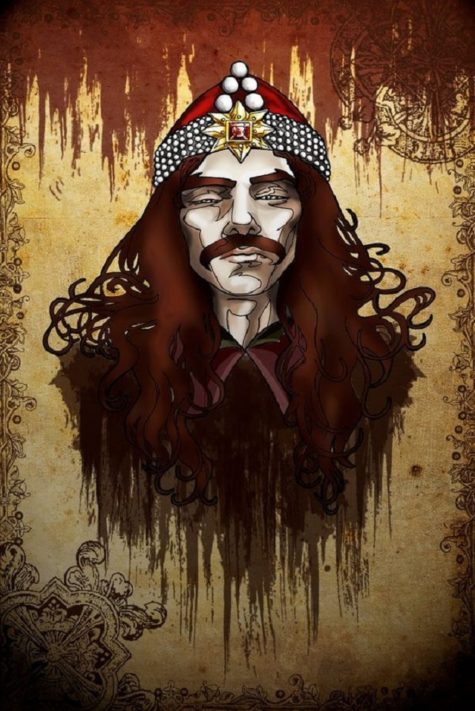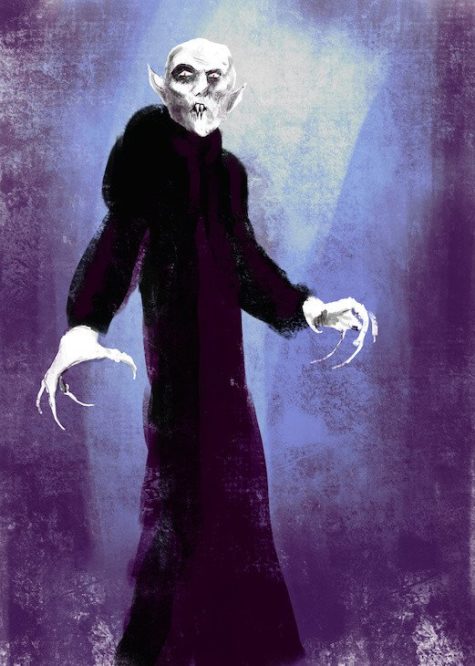Yearly Archives: 2019
According to astrological and lunar lore, there are best days for doing a variety of tasks. The best days listed here are based on both the phase of the moon and its position in the zodiac. Many people believe that if you do the tasks on the dates listed, you will get the best results possible.
December 1:
- Castrate Farm Animals
- Cut Firewood
- Dig Holes
- Kill Plant Pests
- Mow Grass (to increase growth)
- Paint
- Potty Train a Child
- Wean a Baby or an Animal
December 2:
- Castrate Farm Animals
- Cut Firewood
- Dig Holes
- Kill Plant Pests
- Mow Grass (to increase growth)
- Paint
- Potty Train a Child
- Wean a Baby or an Animal
December 3:
- Castrate Farm Animals
- Cut Firewood
- Cut Hair (to increase growth)
- Dig Holes
- Get Married
- Mow Grass (to increase growth)
- Plant Above Ground Crops
- Potty Train a Child
- Start Diet (to gain weight)
- Wax Floors
- Wean a Baby or an Animal
December 4:
- Castrate Farm Animals
- Cut Firewood
- Cut Hair (to increase growth)
- Dig Holes
- Get Married
- Mow Grass (to increase growth)
- Plant Above Ground Crops
- Potty Train a Child
- Start Diet (to gain weight)
- Wax Floors
- Wean a Baby or an Animal
December 5:
- Bake
- Cut Firewood
- Dig Holes
- Kill Plant Pests
- Mow Grass (to increase growth)
December 6:
- Bake
- Cut Firewood
- Dig Holes
- Kill Plant Pests
- Mow Grass (to increase growth)
December 7:
- Bake
- Cut Firewood
- Dig Holes
- Kill Plant Pests
- Mow Grass (to increase growth)
December 8:
- Advertise Something for Sale
- Cut Firewood
- Cut Hair (to increase growth)
- Dig Holes
- Get Married
- Mow Grass (to increase growth)
- Paint
- Plant Above Ground Crops
- Wax Floors
December 9:
- Advertise Something for Sale
- Cut Firewood
- Cut Hair (to increase growth)
- Dig Holes
- Get Married
- Mow Grass (to increase growth)
- Paint
- Plant Above Ground Crops
- Wax Floors
December 10:
- Cut Firewood
- Dig Holes
- Kill Plant Pests
- Mow Grass (to increase growth)
- Set Eggs
- Travel (for pleasure)
December 11:
- Cut Firewood
- Dig Holes
- Kill Plant Pests
- Mow Grass (to increase growth)
- Set Eggs
- Travel (for pleasure)
December 12:
- Brew
- Can Fruits and Vegetables
- Hunting
- Mow Grass (to slow growth)
- Plant Flowers
- Plant Root Crops
- Plant Seed Beds
- Slaughter
- Transplant (seedlings and plants)
December 13:
- Brew
- Can Fruits and Vegetables
- Hunting
- Mow Grass (to slow growth)
- Plant Flowers
- Plant Seed Beds
- Slaughter
- Transplant (seedlings and plants)
December 14:
- Ask For a Loan
- Cut Hair (to slow growth)
- Demolition
- Dig Post Holes
- Dry Fruits and Vegetables
- Kill Plant Pests
- Mow Grass (to slow growth)
- Paint
- Pick Apples and Pears
- Quit Smoking
- Start Diet (to lose weight)
- Wash Wooden Floors
December 15:
- Ask For a Loan
- Cut Hair (to slow growth)
- Demolition
- Dig Post Holes
- Dry Fruits and Vegetables
- Kill Plant Pests
- Mow Grass (to slow growth)
- Paint
- Pick Apples and Pears
- Plant Root Crops
- Quit Smoking
- Start Diet (to lose weight)
- Wash Wooden Floors
December 16:
- Ask For a Loan
- Cut Hair (to slow growth)
- Demolition
- Dig Post Holes
- Dry Fruits and Vegetables
- Kill Plant Pests
- Mow Grass (to slow growth)
- Paint
- Pick Apples and Pears
- Plant Root Crops
- Quit Smoking
- Start Diet (to lose weight)
- Wash Wooden Floors
December 17:
- Kill Plant Pests
- Mow Grass (to slow growth)
- Quit Smoking
- Start Diet (to lose weight)
December 18:
- Harvest
- Kill Plant Pests
- Mow Grass (to slow growth)
- Quit Smoking
- Start Diet (to lose weight)
December 19:
- Cut Hair (to slow growth)
- Get Married
- Mow Grass (to slow growth)
- Plant Flowers
December 20:
- Cut Hair (to slow growth)
- Get Married
- Mow Grass (to slow growth)
December 21:
- Can Fruits and Vegetables
- Make Jams and Jellies
- Mow Grass (to slow growth)
- Plant Root Crops
- Plant Seed Beds
- Prune Trees
- Transplant (seedlings and plants)
December 22:
- Can Fruits and Vegetables
- Make Jams and Jellies
- Mow Grass (to slow growth)
- Plant Flowers
- Plant Root Crops
- Plant Seed Beds
- Prune Trees
- Transplant (seedlings and plants)
December 23:
- Advertise Something for Sale
- Castrate Farm Animals
- Cut Hair (to slow growth)
- Demolition
- Harvest
- Kill Plant Pests
- Mow Grass (to slow growth)
- Pick Apples and Pears
- Plant Root Crops
- Potty Train a Child
- Quit Smoking
- Start Diet (to lose weight)
- Wash Windows
- Wash Wooden Floors
- Wean a Baby or an Animal
December 24:
- Advertise Something for Sale
- Castrate Farm Animals
- Cut Hair (to slow growth)
- Demolition
- Harvest
- Kill Plant Pests
- Mow Grass (to slow growth)
- Pick Apples and Pears
- Plant Root Crops
- Potty Train a Child
- Quit Smoking
- Start Diet (to lose weight)
- Wash Windows
- Wash Wooden Floors
- Wean a Baby or an Animal
December 25:
- Castrate Farm Animals
- Mow Grass (to slow growth)
- Plant Root Crops
- Potty Train a Child
- Prune Trees
- Wean a Baby or an Animal
December 26:
- Bake
- Castrate Farm Animals
- Cut Firewood
- Cut Hair (to increase growth)
- Dig Holes
- Mow Grass (to increase growth)
- Plant Above Ground Crops
- Potty Train a Child
- Wax Floors
- Wean a Baby or an Animal
December 27:
- Bake
- Castrate Farm Animals
- Cut Firewood
- Cut Hair (to increase growth)
- Dig Holes
- Mow Grass (to increase growth)
- Plant Above Ground Crops
- Potty Train a Child
- Wax Floors
- Wean a Baby or an Animal
December 28:
- Castrate Farm Animals
- Cut Firewood
- Dig Holes
- Kill Plant Pests
- Mow Grass (to increase growth)
- Paint
- Potty Train a Child
- Wean a Baby or an Animal
December 29:
- Castrate Farm Animals
- Cut Firewood
- Dig Holes
- Kill Plant Pests
- Mow Grass (to increase growth)
- Paint
- Potty Train a Child
- Wean a Baby or an Animal
December 30:
- Castrate Farm Animals
- Cut Firewood
- Cut Hair (to increase growth)
- Dig Holes
- Get Married
- Mow Grass (to increase growth)
- Plant Above Ground Crops
- Potty Train a Child
- Start Diet (to gain weight)
- Wax Floors
- Wean a Baby or an Animal
December 31:
- Castrate Farm Animals
- Cut Firewood
- Cut Hair (to increase growth)
- Dig Holes
- Get Married
- Mow Grass (to increase growth)
- Plant Above Ground Crops
- Potty Train a Child
- Start Diet (to gain weight)
- Wax Floors
- Wean a Baby or an Animal
Source: The Farmer’s Almanac
According to astrological and lunar lore, there are best days for doing a variety of tasks. The best days listed here are based on both the phase of the moon and its position in the zodiac. Many people believe that if you do the tasks on the dates listed, you will get the best results possible.
November 1:
- Bake
- Castrate Farm Animals
- Cut Firewood
- Cut Hair (to increase growth)
- Dig Holes
- Mow Grass (to increase growth)
- Plant Above Ground Crops
- Potty Train a Child
- Wax Floors
- Wean a Baby or an Animal
November 2:
- Bake
- Castrate Farm Animals
- Cut Firewood
- Cut Hair (to increase growth)
- Dig Holes
- Mow Grass (to increase growth)
- Plant Above Ground Crops
- Potty Train a Child
- Wax Floors
- Wean a Baby or an Animal
November 3:
- Castrate Farm Animals
- Cut Firewood
- Dig Holes
- Kill Plant Pests
- Mow Grass (to increase growth)
- Paint
- Potty Train a Child
- Wean a Baby or an Animal
November 4:
- Castrate Farm Animals
- Cut Firewood
- Dig Holes
- Kill Plant Pests
- Mow Grass (to increase growth)
- Paint
- Potty Train a Child
- Wean a Baby or an Animal
November 5:
- Castrate Farm Animals
- Cut Firewood
- Cut Hair (to increase growth)
- Dig Holes
- Get Married
- Mow Grass (to increase growth)
- Plant Above Ground Crops
- Potty Train a Child
- Set Eggs
- Start Diet (to gain weight)
- Wax Floors
- Wean a Baby or an Animal
November 6:
- Castrate Farm Animals
- Cut Firewood
- Cut Hair (to increase growth)
- Dig Holes
- Get Married
- Mow Grass (to increase growth)
- Plant Above Ground Crops
- Potty Train a Child
- Start Diet (to gain weight)
- Wax Floors
- Wean a Baby or an Animal
November 7:
- Castrate Farm Animals
- Cut Firewood
- Cut Hair (to increase growth)
- Dig Holes
- Get Married
- Mow Grass (to increase growth)
- Plant Above Ground Crops
- Potty Train a Child
- Start Diet (to gain weight)
- Wax Floors
- Wean a Baby or an Animal
November 8:
- Bake
- Cut Firewood
- Dig Holes
- Kill Plant Pests
- Mow Grass (to increase growth)
November 9:
- Bake
- Cut Firewood
- Dig Holes
- Kill Plant Pests
- Mow Grass (to increase growth)
November 10:
- Advertise Something for Sale
- Cut Firewood
- Cut Hair (to increase growth)
- Dig Holes
- Get Married
- Mow Grass (to increase growth)
- Paint
- Plant Above Ground Crops
- Wax Floors
November 11:
- Advertise Something for Sale
- Cut Firewood
- Cut Hair (to increase growth)
- Dig Holes
- Get Married
- Mow Grass (to increase growth)
- Paint
- Plant Above Ground Crops
- Wax Floors
November 12:
- Advertise Something for Sale
- Ask For a Loan
- Dig Post Holes
- Make Jams and Jellies
- Mow Grass (to slow growth)
- Paint
- Slaughter
- Transplant (seedlings and plants)
November 13:
- Cut Hair (to slow growth)
- Kill Plant Pests
- Mow Grass (to slow growth)
- Quit Smoking
- Set Eggs
- Slaughter
- Wash Wooden Floors
November 14:
- Cut Hair (to slow growth)
- Kill Plant Pests
- Mow Grass (to slow growth)
- Plant Root Crops
- Quit Smoking
- Set Eggs
- Slaughter
- Wash Wooden Floors
November 15:
- Brew
- Can Fruits and Vegetables
- Hunting
- Mow Grass (to slow growth)
- Plant Flowers
- Plant Root Crops
- Plant Seed Beds
- Transplant (seedlings and plants)
November 16:
- Brew
- Can Fruits and Vegetables
- Hunting
- Mow Grass (to slow growth)
- Plant Flowers
- Plant Seed Beds
- Transplant (seedlings and plants)
November 17:
- Ask For a Loan
- Cut Hair (to slow growth)
- Demolition
- Dig Post Holes
- Dry Fruits and Vegetables
- Kill Plant Pests
- Mow Grass (to slow growth)
- Paint
- Pick Apples and Pears
- Quit Smoking
- Start Diet (to lose weight)
- Wash Wooden Floors
November 18:
- Ask For a Loan
- Cut Hair (to slow growth)
- Demolition
- Dig Post Holes
- Dry Fruits and Vegetables
- Kill Plant Pests
- Mow Grass (to slow growth)
- Paint
- Pick Apples and Pears
- Quit Smoking
- Start Diet (to lose weight)
- Wash Wooden Floors
November 19:
- Harvest
- Kill Plant Pests
- Mow Grass (to slow growth)
- Plant Root Crops
- Quit Smoking
- Start Diet (to lose weight)
November 20:
- Harvest
- Kill Plant Pests
- Mow Grass (to slow growth)
- Plant Root Crops
- Quit Smoking
- Start Diet (to lose weight)
November 21:
- Cut Hair (to slow growth)
- Get Married
- Mow Grass (to slow growth)
- Plant Flowers
November 22:
- Cut Hair (to slow growth)
- Get Married
- Mow Grass (to slow growth)
- Plant Flowers
November 23:
- Cut Hair (to slow growth)
- Get Married
- Mow Grass (to slow growth)
- Plant Flowers
November 24:
- Can Fruits and Vegetables
- Make Jams and Jellies
- Mow Grass (to slow growth)
- Plant Seed Beds
- Prune Trees
- Transplant (seedlings and plants)
November 25:
- Can Fruits and Vegetables
- Make Jams and Jellies
- Mow Grass (to slow growth)
- Plant Root Crops
- Plant Seed Beds
- Prune Trees
- Transplant (seedlings and plants)
November 26:
- Advertise Something for Sale
- Castrate Farm Animals
- Cut Firewood
- Dig Holes
- Kill Plant Pests
- Mow Grass (to increase growth)
- Plant Root Crops
- Potty Train a Child
- Travel (for pleasure)
- Wash Windows
- Wean a Baby or an Animal
November 27:
- Advertise Something for Sale
- Castrate Farm Animals
- Cut Firewood
- Dig Holes
- Kill Plant Pests
- Mow Grass (to increase growth)
- Potty Train a Child
- Travel (for pleasure)
- Wash Windows
- Wean a Baby or an Animal
November 28:
- Bake
- Castrate Farm Animals
- Cut Firewood
- Cut Hair (to increase growth)
- Dig Holes
- Mow Grass (to increase growth)
- Plant Above Ground Crops
- Potty Train a Child
- Wax Floors
- Wean a Baby or an Animal
November 29:
- Bake
- Castrate Farm Animals
- Cut Firewood
- Cut Hair (to increase growth)
- Dig Holes
- Mow Grass (to increase growth)
- Plant Above Ground Crops
- Potty Train a Child
- Wax Floors
- Wean a Baby or an Animal
November 30:
- Castrate Farm Animals
- Cut Firewood
- Dig Holes
- Kill Plant Pests
- Mow Grass (to increase growth)
- Paint
- Potty Train a Child
- Wean a Baby or an Animal :
Source: The Farmer’s Almanac
The Dance of the Devils (La danza de los diablos) is a dance performed in Costa Chica, the Pacific coast of Guerrero and Oaxaca in Mexico. As part of the ‘Day of the Dead’ festivities celebrated on the last days of October and the first days of November in Mexico. Its purpose is not so much to terrify however as to amuse and draw the community together while paying reverence to the spirits of the dead on the Day of the Dead.
Men dressed in rags and high boots perform the Dance of the Devils in Afro-Mexican communities. During these celebrations young men dress up as cowboys or as dead people, in which case they wear dusty clothes covered with terrain (to represent the passage of time and the fact of being buried underground). Their faces are covered with masks made of leather or paper with long beards and hair. A black beard represents a young devil, a white beard represents an old one. A small pair of goat or deer horns crowns the mask.
The men dance through different villages on All Souls Day, making noise and playing with children and young people by flogging them with a whip.
An elder diablo called el Terron, and a female diabla called la Minga, who carries a baby doll, lead the dancers. The elder diablo plays and whips the other diablos into dancing and chases la Minga around with the whip because she interrupts the concentration of the devil dancers. One way that la Minga attempts to disrupt the other dancers is by seduction, the Minga also tries to give her doll, which is a symbol of her productive power, to the dancers or to anyone in the audience, seeking a father to her ‘baby’.
The face of the men performing the dance is covered with a leather deer mask with horns and An elder devil, called Tenango, whips the other devils during this performance. Groups of 24 dancers (the devils) stomp and twirl in rows or circles along the streets; eventually, they stop at the houses where the owner gives them money or food for dancing.
Origins of the Dance of the Devils:
The Dance of the Devils is part of the ceremonial commemoration of the dead. It is a celebration of colonial origin, which was introduced by the black people of the Costa Chica of Guerrero and Oaxaca, who were brought there as slaves by the Spanish colonizers to work in mines, cotton plantations and cattle ranches.
From Río Grande, in the town of Tututepec, on the Oaxacan coast, to Tenango, in the municipality of Azoyú, to the north, this dance recalls the past times when ranchers or cowboys used the whip as well as trumpet to groups of wild cattle in order to force them to cross the Sierra Madre del Sur, to reach the plateau and sell the animals.
The Devils in the Mexican dance also use the whip, and behave according to the cowboy stereotype, that is, as brave and strong man. This performance, however, is also a historical memory, which becomes a ritual memory to the black population which was an intermediate caste, between the indigenous and the white land owners.
The black population who arrived in Mexico from very different lands such as Africa and the Antilles, bringing different languages and cultures, could not recreate a black culture of African traits, as could happen instead, to various degrees, in other Afro-American regions. These people therefore in their segregation from festivities and public celebrations organized by the masters of the haciendas, used to perform their own festivities secretly, by performing rituals to their African gods, playing drums and dancing.
At the same time, however, they borrowed elements of some indigenous and Catholic traditions and readopted them – with imagination and joy – to overcome the pain of domination and the humiliation of banishment.
It is no coincidence that the celebration of their ancestors is performed through the cowboy/devil figure. In this dance the ritual action harmonizes gestures and words. Devils are the dead who revive to do mischief, to steal, to sow fear and laughter. The dance could also be called the ‘Devil’s Game’, a game designed to laugh at the forbidden: a capataz (a boss), a bad mother, or a violent and bossy father.
The function of the Dance of the Devils, from a social aspect, is to cleanse and protect the community from spirits that carry evil energy. It can be viewed a way to control evil. In a sense, the dance is used to call the tono spirits of the ancestors to heal the community similar to the way an individual might be healed; the masks and the boite drum call the spirits and the dance is the mode of healing. Trance possession, another traditional healing mode, is also part of these dances, as a means to form a connection between the spiritual and material.
The dancers use their bodies to bring the spirits and form a bond between them and the community. “As they dance, they create an aura, which begins to rise and cover everyone who is sitting there. ” Even the children will come and sit quietly and watch. The force, she says, starts in the dancers’ hands and continues through their feet, legs, hips, shoulders, and faces until they are entirely transformed. The wearing of the tono masks allows them to achieve a more powerful transformation.
About The Dance:
The dance itself is strikingly similar to the egungun dances of West Africa; the performance is a form of ancestor reverence, and similar dances that may be seen throughout the Diaspora (the dispersion of the people from their original homeland). While the Dance of the Devils occurs within a context that includes European and Native influences, the core of the dance, its meaning and specific elements, are African.
The Dance of the Devils can be traced to Europe during the Middle Ages, but according to an Afro-Mestizo elder, the devils are spirits of the dead and not devils in search of souls. They are actually ancestral spirits whose presence is celebrated and encouraged. Similar to a dance performed by the Abakua in Cuba, dressing as a diablo (devil) symbolizes the willingness to allow the spirit to possess your body.
The egungun masquerades of West Africa are, like the Dance of the Devils, performed as part of a feast of the dead. Masks are worn which represent the dead, symbolically, but not as individual persons; flogging with whips is intended to promote growth and maturity in young men and fertility in women. The egungun dances were a strong social force in the societies where they originated, especially in times of unrest or external threat.
Another similarity is that while only men generally perform the dances, there is often at least one woman who either participates on some level or teaches the dance.
It has been suggested that the presence of the whip is a reference to the relationship between the former slaves and their overseers. However, the presence of flogging in the egungun dances of West Africa, when compared to Nana Minga and her baby, suggests that flogging is another African retention and bears its original symbolic meaning of fertility and protection against evil spiritual energy.
The dance being performed on the Day of the Dead leads one to think that the dance relates to the supernatural world of the spirits. The fact that the dancers dress in cowboy clothes and wear masks made of horse hair may be interpreted to mean that the dance represents the spirits of dead cowboys, the employment of many of the Afro-Mestizos cimarron ancestors. However, the masks, which appear animal-like, may in fact represent the tono spirits of ancestors, an idea supported by the presence of the boite drum.
The boite or bute, is a large gourd with a goatskin head; the drum is played by moving a stick through a hole in the center to create a vibration, not by striking. It is very similar to a drum used by the Abakua, an all-male secret society in Cuba, and is described in a similar fashion, as having the voice of a big cat, a leopard or jaguar, because of the roaring sound it makes.
When attempting to heal someone of sickness Afro-Mestizos call the animal tono of the sick person. Finding the person’s tono is a way to determine if the sickness is caused by the animal’s death. Healers in attempt to cure a person called the leopard, using the roaring sound of the boite drum to simulate the voice of the big cat.
Sources:
La Tomatina is a food fight festival held on the last Wednesday of August each year in the town of Bunol near to Valencia in Spain. (in 2019 it is the 28th of August). Thousands upon thousands of people make their way from all corners of the world to fight in this ‘World’s Biggest Food Fight’ where more than one hundred metric tons of over-ripe tomatoes are thrown in the streets.
Prior to 2013 anywhere from 40,000 to 50,000 (reported to be 50,000 in 2012) people crammed into this huge tomato fight, greatly expanding Bunol’s normal 9,000 person population. Since 2013 official ticketing has been in place limiting the number of participants to just 20,000 lucky people.
There is limited accommodation for people who come to La Tomatina, so many people take the easier option of staying in nearby Valencia just 38km to Bunol by bus or train. In preparation for the dirty mess that will ensue, shopkeepers use huge plastic covers on their storefronts in order to protect them from the carnage.
What Happens at La Tomatina
At around 11am many trucks haul the bounty of tomatoes into the centre of the town, Plaza del Pueblo. The tomatoes come from Extremadura, where they are less expensive. Technically the festival does not begin until one brave soul has climbed to the top of a two-story high, greased-up wooden pole and reached the coveted ham at the top. In practice this process takes a long time and the festival starts despite no one reaching the meaty prize. The signal for the beginning of the fight is firing of water cannons, and the chaos begins. Once it begins, the battle is generally every man for himself.
After an one hour the fighting ends. At this point, no more tomatoes can be thrown. The cleaning process involves the use of fire trucks to spray down the streets, with water provided from a Roman aqueduct. The authorities seem more concerned with cleaning the town than cleaning the visitors, so some people find water at the Bunol River to wash themselves, although some kind residents will hose passers-by down. Once the tomato pulp is flushed, the ground is clean due to the acidity of the tomato.
The Rules of La Tomatina
- Do not bring bottles or hard objects as they can cause accidents and hurt other participants
- Do not rip other people’s T-shirts
- You must squash the tomatoes before throwing them as this reduces the impact
- Ensure you keep a safe distance from the lorries
- As soon as you hear the second shot, you must stop throwing tomatoes
Useful Advice
- Wear closed shoes that you do not mind throwing away afterwards. If you wear flip-flops, you may get hurt, or you could lose them easily during the battle
- Wear old clothes, or clothes that you are not planning to wear again. They will most likely end up damaged from being ripped or incredibly dirty
- You may find goggles useful. However, it is safer if you just ensure that you always have something clean to wipe your eyes with. The best thing is if you tuck your T-Shirt into your shorts to keep the bottom part of your T-shirt clean and dry
- If you are planning to take pictures, bring a waterproof camera!
- If you are not from Bunol, and you want to stay overnight, don’t forget to look for and secure accommodation in advance.
- Do not miss the Palojabon – a greased pole with a Spanish ham at the top. Whoever can climb the pole and get the ham can keep it!
- Stay safe and enjoy the festivities as much possible
How did La Tomatina Start?
The tomato fight has been a strong tradition in Bunol since 1944 or 1945. No one is completely certain how this event originated. Possible theories on how the Tomatina began include a local food fight among friends, a juvenile class war, a volley of tomatoes from bystanders at a carnival parade, a practical joke on a bad musician, and the anarchic aftermath of an accidental lorry spillage. One popular theory is that disgruntled townspeople attacked city councilmen with tomatoes during a town celebration.
The following year, the young people picked a quarrel by their own decision and brought the tomatoes from home. Although the police broke up the early tradition in the following years, the young boys had made history without being conscious about it. Whatever happened to begin the tradition, it was enjoyed so much that it was repeated the next year, and the year after that, and so on.
La Tomatina was banned in the early 50s, during the Spanish State period under Francisco Franco for having no religious significance, which was not a problem for the participants who were arrested. But the people spoke and the festivity was again allowed with more participants and even more enthusiasm.
The festivity was again cancelled till 1957 when, as a sign of protest, the tomato burial was held. It was a demonstration in which the residents carried a coffin with a huge tomato inside. The parade was accompanied by a music band which played funeral marches and it was totally successful. La Tomatina Festival was finally allowed and became an official festivity.
As a result of the report of Javier Basilio, broadcasted in the Spanish Television Program called Informe Semanal, the festivity started to be known in the rest of Spain.
Since then, the number of participants increased year after year as well as the excitement about La Tomatina Festival. In 2002, La Tomatina of Buñol was declared Festivity of International Tourist Interest by the Secretary Deparment of Tourism due to its success.
The festival is now held in honor of the town’s patron saints, Luis Bertran and the Mare de Deu dels Desemparats (Mother of God of the Defenseless), a title of the Virgin Mary.
Sources:
“I want to believe.” These are the words of notorious X-Files hero Fox Mulder, who convinced an entire generation that the truth is out there – we just have to find it. But on July 2, it won’t only be sci-fi enthusiasts trying out their ET sleuthing skills, as everyone on planet earth will have to opportunity to celebrate World UFO Day.
World UFO Day is an awareness day for people to gather together and watch the skies for unidentified flying objects. The day is celebrated by some on June 24, and others on July 2.
The stated goal of the July 2 celebration is to raise awareness of “the undoubted existence of UFOs” and to encourage governments to declassify their files on UFO sightings. So why July 2? For many, this date represents the anniversary of the famed and all-but-confirmed 1947 incident in Roswell, New Mexico. Believers claim a UFO crash landed here, deep in the American southwest, but that the government has been covering it up ever since.
June 24 is the date that aviator Kenneth Arnold reported what is generally considered to be the first widely reported unidentified flying object sighting in the United States.
UFOs have been the stuff of legend for centuries, but it wasn’t until the 1950s that freaky flying saucers grabbed national and international mainstream attention. Since then, UFOs have captured the minds of old and young alike, and witness’ stories have proliferated around the world. World UFO Day serves as a way for everyone to come together and watch the skies on the same night in search of UFOs, but that’s not its only purpose.
Many see the holiday as a way to spread knowledge and awareness of UFOs, making a case for their existence, and hoping to make disciples out of the dubious. What do you believe?
And no matter what you believe, World UFO Day is an opportunity to think laterally, creatively, and perhaps even a bit unconventionally. We are encouraged o challenge accepted knowledge, and for once, maybe it’s okay for our minds to be off in space. 🙂
What is a UFO?
The letters UFO stand for Unidentified Flying Objects. Most of the flying objects that occur on earth are generally from our earth and heavily monitored with technology. UFOs are generally classified as anomalies that are completely unidentified and in identifiable. The most general definition of the UFO is something that’s apparent in the sky that is not identifiable as any known object or natural phenomena.
Identification of a UFO
Normally what happens with UFOs is that they are identified later or explained as a natural phenomenon but until a flying object is identified as being man-made or natural phenomena it keeps its title as a UFO.
The title of UFO was originally created in 1953 by the United States Air Force so that they could record and review any instances where a flying object was logged in official reporting.
Throughout the 1940’s and the early 1950’s UFOs were more commonly called flying saucers are flying discs. This image of a UFO seemed to persist through early sci-fi folklore and only really became UFOs during the Cold War with an interest in national security.
Everyone involved in the Cold War conflict was testing new types of aircraft, missiles and more throughout this time. As a result any unidentified flying object needed to be logged and heavily reviewed. This really became one of the first large-scale reporting efforts for UFOs in the world and since UFOs became a natural security concern there have been reports almost worldwide that are consistently reviewed almost every day.
Although most people are quick to associate UFOs with conspiracy theories or a cultural phenomenon it possible that one day one of these unidentified flying objects could prove an association with extraterrestrial life.
Some of the top 20th-century UFO accounts include:
- Foo Fighters: during the 1940’s over the world war theaters small metallic spears and colorful balls of light were seen and even photographed by bomber crews throughout World War II.
- Roswell: one of the most talked about cases in New Mexico as onlookers described the crash of an unidentified flying object.
- The Phoenix lights: in 1997 thousands of people saw V-shaped patterns in the sky for space of around 300 miles from the Nevada line.
There are new reports coming in nearly every year including mass UFO sightings in Houston Texas and Colorado sightings as early as October of 2014.
With so many instances occurring around the world user phenomena that we need to understand. Until more spending and research goes into the identification of these cases we may simply be left with more questions as to what the nature of a UFO is.
How to celebrate World UFO Day
Celebrating UFO Day happens in a lot of different ways, and the number of ways is as varied as the potential number of intelligent species in the known universe. UFO Enthusiasts gather around the world in known UFO hotspots like Roswell New Mexico to share stories, provide support for other believers, and watch for the return of visitors in the night sky.
But this is hardly the only way to celebrate it, if you live in a small community of supporters or are merely quite far from the nearest large one, you can organize it yourself. Getting together with friends and family to watch UFO movies and share the gospel of the little green man is a great way to support awareness of UFO’s and the copious evidence out there supporting their existence.
- Have a “Welcome to Earth” party
In case you needed a reason to throw a party, there’s plenty of opportunity here. Alien and UFO costumes are simple and funny, while the food ideas are endless. Alien cupcakes with green icing, red jello with rocket ships suspended in the middle or even prepackaged moonpies are all great ideas. For an older-earthlings party, try mixing vodka, blue curacao, grenadine, cranberry juice and sours for a Purple People Eater cocktail.
- Do some investigative research.
There are more than enough stories, legends and actual scientific findings on UFOs and space exploration to keep you busy for a day. Use the power of the internet to separate fact from fiction, and try coming up with your own theories on whether the truth really is out there. Here’s a link to some of the Top UFO Documentaries. Finish the evening by gazing up at the stars before going to bed. You never know what you might see.
- Have a UFO movie marathon
Depending how far you want to go back, try watching a few UFO films from different eras. Here’s a link to a list of Top Rated UFO and Alien Movies. The Flash Gordon-types of the 30’s were genre-defining. The Martian marauders story typical of the 50’s and 60’s may be a bit campy for you, but you could have some friends over to watch them a la Mystery Science Theater 3000, and let the heckling begin. Or settle in for the visually stunning films of the last few decades – take your pick, sit back, and blast off.
Whatever you do, keep your eyes to the sky for World UFO Day.
Sources:
- World UFO Day
- Wikipedia
- National Today
- Days Of The Year
Seven Sleepers’ Day (Siebenschläfertag) on June 27 is a feast day commemorating the legend of the Seven Sleepers as well as one of the best-known bits of traditional weather lore (expressed as a proverb) remaining in German-speaking Europe.
The atmospheric conditions on that day are supposed to determine or predict the average summer weather of the next seven weeks. and it is believed that whatever the weather is on this day, it will remain so for seven weeks.
Apparently this forecast is about as accurate as Groundhog Day forecasts in the U.S. The story of the Seven Sleepers has many versions and is widespread throughout the Christian and Muslim worlds. It has been told and retold repeatedly from ancient times to the present day.
The Story of the Seven Sleepers
The earliest Syriac version of the tale states that during the persecutions of the Roman emperor Decius, around 250, seven young men were accused of being Christians. They were given some time to recant their faith, but chose instead to give their worldly goods to the poor and retire to a mountain cave to pray, where they fell asleep.
The emperor, seeing that their attitude towards their faith had not changed, ordered the mouth of the cave to be sealed. Decius died in 251, and many years passed during which Christianity went from being persecuted to being the state religion of the Roman Empire. At some later time—usually given as during the reign of Theodosius II (408–450)—the landowner decided to open up the sealed mouth of the cave, thinking to use it as a cattle pen. He opened it and found the sleepers inside.
They awoke, imagining that they had slept for a single day, and sent one of their number to Ephesus to buy food, with instructions to be careful in case the Romans were to recognize him and seize him. Upon arriving in the city, this youth was astounded to find buildings with crosses attached. The townspeople for their part were amazed to find a man trying to spend old coins from the reign of Decius. The bishop was summoned to interview the sleepers; they told him their miracle story, and died praising God.
As the earliest versions of the legend spread from Ephesus, an early Christian catacomb came to be associated with it, attracting scores of pilgrims. On the slopes of Mount Pion near Ephesus, the cave of the Seven Sleepers with ruins of the church built over it was excavated in 1927–28. The excavation brought to light several hundred graves which were dated to the 5th and 6th centuries. Inscriptions dedicated to the Seven Sleepers were found on the walls of the church and in the graves. This cave is now a local tourist attraction.
The story of the Seven Sleepers is probably best known in the Muslim world. It is told in the Qur’an (Surah 18, verse 9-26). The Qur’anic rendering of this story doesn’t state exactly the number of sleepers; the exact number is believed to be known to God alone. It also gives the number of years that they slept as 300 solar years (equivalent to 309 lunar years).
Unlike the Christian story, the Islamic version includes mention of a dog who accompanied the youths into the cave, and was also asleep. But when people passed by the cave it looked as if the dog was just keeping watch at the entrance, making them afraid of seeing what is in the cave once they saw the dog. In Islam, these youths are referred to as “The People of the Cave.”
There are numerous retellings of the tale in early modern and modern literature. John Donne’s (1572-1631) poem “The good-morrow” contains the lines:
were we not wean’d till then?
But suck’d on country pleasures, childishly?
Or snorted we in the Seven Sleepers’ den?”
A Recipe For Today
Given that the sleepers were hungry when they awoke and sent one of their number to buy food, I thought a local Turkish recipe found at roadside food stalls would be suitable for the day. Gözleme are flaky pastry packets stuffed with a mix of feta cheese and spinach plus herbs and spices. Variants can be found throughout Turkey and Greece. They can also be stuffed with ground lamb flavored with garlic, paprika, and cumin. Once in a while you will come across them with both fillings in one.
Ingredients:
Dough
- 2 cups (250 g) plain flour, unbleached
- 2 cups (250 g) wholemeal flour
- pinch of salt
- vegetable oil
Filling
- 2 cups (450 g) grated feta cheese or
- 2 cups (200 g) finely chopped spinach leaves
- ½ cup (50 g) chopped fresh mint leaves
- ½ cup (50 g)chopped flat leaf parsley
- ½ cup (80 g) chopped green onion
- ½ cup (80 g) diced white onion
- 1 tsp (5 g) white pepper
- 1 tsp (5 g) allspice
- 1 tsp (5 g) dried oregano
- 1 tsp (5 g) dried sage
Instructions:
Sift the flours and salt and mix with 1 ½ cups (210 ml) of water in an electric mixer with a dough hook or knead by hand for at least ten minutes.
Keep adding more water a little at a time until you get a very pliable, elastic dough that is easy to knead, but not so watery that it is too sticky to handle. Dust frequently with the extra flour.
Allow the dough to stand, covered, overnight (at least 10 hours). When ready to cook, divide the dough into six round portions. Dust with flour. Roll one of the rounds flat with a rolling pin on a flour-dusted surface, into a rectangle shape, as thinly as possible.
Brush on a little oil, then fold over into a square. Fold over twice more into a square. Repeat the dusting, rolling out to a large rectangle, folding, oiling, dusting process three more times. Repeat the entire process for each of the six rounds
Take one of the folded dough squares and roll it out very thinly for the final time, into a large square. Sprinkle on the filling sparingly – – as you would for a pizza topping but on half of the square only.
Start with a layer of cheese. Mix the spinach, mint, green onion and parsley together in a bowl, and add some of this as the next layer. Mix together the white onion, spices, and dried herbs, and add some as a final topping.
Fold over the uncovered half of the square to cover the filling. Press down lightly all over.
Cook on a pre-heated oiled heavy skillet (cast iron if possible). Make sure the skillet is not too hot. It takes about 10 minutes to cook everything through. Turn them often until the outside is golden and crisp. Cut into smaller squares and serve with lemon wedges. Yield 6.
Some Weather Science
The Seven Sleepers singularity is contested as quite inaccurate in practice. Objections have been raised that the weather lore associated with the day might have arisen before the 1582 Gregorian calendar reform, and as at this time the difference to the Julian calendar amounted to ten days, July 7 would be the actual Seven Sleepers Day. Based on this date the prediction has a slightly increased probability of about 55–70%, if confined to the southern parts of Germany, where the rule seems to have originated. In contrast, the weather lore is not applicable to Northern Germany and its rather oceanic climate.
Depending on the meandering flow of the polar jet stream in the Northern Hemisphere (Rossby waves) and the emergence of veering low-pressure and high-pressure (anticyclone) systems, the atmospheric conditions tend to stabilize in early July: either a high-pressure ridge takes hold over Scandinavia, which may coalesce with the subtropical Azores High to form a stable and warm macro weather situation; or a high North Atlantic oscillation between the Icelandic Low and the Azores High implies a long-standing influx of wet air masses into Central Europe.
Sources:
The 11th of June is known as the Holiday of the Happy Gnomes.
Gnomes are Earth Spirits or Earth Elementals. Paracelsus describes them as being two spans high, reluctant to interact with humanity and able to pass through the Earth as easily as we walk through the air.
They might be ‘reluctant’ because they are lovers of shiny things and guardians of all gemstones, ores and minerals found in the earth – and also treasures which humans have buried in the earth.
Gnomes live in underground caves, so when humans began digging cellars for their homes, these were very attractive to Gnomes. Cellars are where we keep beer, wine and cheese all things which Gnomes soon grew very fond of. But as they like to pay for whatever they might take, if you have a gnome in your beer cellar, you will also be blessed with the best beer in the district.
You can attract a Gnome to your cellar, or thank the spirits that live there, by leaving them out the occasional glass of beer or wine and a nice cheese sandwich. Thus ensuring your spirits continue to be Happy Gnomes.
- Found at Raven Corvus
- Read more about Gnomes here: Garden Gnomes and Elemental Spirits
The 2nd of June is St Erasmus of Formia’s day – better known as St Elmo. He is said to have kept preaching during a thunderstorm and even when lightning struck near him. Sailors therefore look on the electrical discharges that hit masts or other protuberances as a sign that the saint is watching over them, and call this St Elmo’s Fire.
St. Elmo’s fire is a bright blue or violet glow, appearing like fire in some circumstances, from tall, sharply pointed structures such as lightning rods, masts, spires and chimneys, and on aircraft wings or nose cones. St. Elmo’s fire can also appear on leaves and grass, and even at the tips of cattle horns. Often accompanying the glow is a distinct hissing or buzzing sound. It is sometimes confused with ball lightning.
Invoking Saint Erasmus
In addition to being the patron saint of sailors, Saint Erasmus is also the patron saint of a host of other groups, including explosives workers, ordnance workers, and women in labor. He is also invoked against colic, birth pains, intestinal disorders, stomach diseases, and storms. He is one of the Fourteen Holy Helpers, a group of saints regarded as special protectors against various illnesses.
Invocation of St. Erasmus
Holy martyr Erasmus, who didst willingly and bravely bear the trials and sufferings of life, and by thy charity didst console many fellow-sufferers; I implore thee to remember me in my needs and to intercede for me with God. Staunch confessor of the Faith, victorious vanquisher of all tortures, pray Jesus for me and ask Him to grant me the grace to live and die in the Faith through which thou didst obtain the crown of glory. Amen.
Account of His Life and Martyrdom
Erasmus was Bishop of Formia, Italy. During the persecution against Christians under the emperors Diocletian (284-305) and Maximian Hercules (284-305), he left his diocese and went to Mount Libanus, where he hid for seven years. However, an angel is said to have appeared to him, and counseled him to return to his city.
On the way, he encountered some soldiers who questioned him. Erasmus admitted that he was a Christian and they brought him to trial at Antioch before the emperor Diocletian. After suffering terrible tortures, he was bound with chains and thrown into prison, but an angel appeared and helped him escape.
He passed through Lycia, where he raised up the son of an illustrious citizen. This resulted in a number of baptisms, which drew the attention of the Western Roman Emperor Maximian who, according to Voragine, was “much worse than was Diocletian.” Maximian ordered his arrest and Erasmus continued to confess his faith. They forced him to go to a temple of the idol, but along the saint’s route all the idols fell and were destroyed, and from the temple there came fire which fell upon many of the pagans.
That made the emperor so angry he had Erasmus enclosed in a barrel full of protruding spikes, and the barrel was rolled down a hill. But an angel healed him. Further tortures ensued.
When he was recaptured, he was brought before the emperor and beaten and whipped, then coated with pitch and set alight (as Christians had been in Nero’s games), and still he survived. Thrown into prison with the intention of letting him die of starvation, St Erasmus managed to escape.
He was recaptured and tortured some more in the Roman province of Illyricum, after boldly preaching and converting numerous pagans to Christianity. Finally, according to this version of his death, his stomach was slit open and his intestines wound around a windlass. This version may have developed from interpreting an icon that showed him with a windlass, signifying his patronage of sailors.
Sources:
According to astrological and lunar lore, there are best days for doing a variety of tasks. The best days listed here are based on both the phase of the moon and its position in the zodiac. Many people believe that if you do the tasks on the dates listed, you will get the best results possible.
June 1:
- Advertise Something for Sale
- Ask For a Loan
- Dig Post Holes
- Get Married
- Make Jams and Jellies
- Mow Grass (to slow growth)
- Paint
- Plant Root Crops
- Transplant (seedlings and plants)
June 2:
- Cut Hair (to slow growth)
- Harvest
- Kill Plant Pests
- Mow Grass (to slow growth)
- Quit Smoking
- Wash Wooden Floors
June 3:
- Cut Firewood
- Dig Holes
- Kill Plant Pests
- Mow Grass (to increase growth)
- Travel (for pleasure)
June 4:
- Bake
- Buy a Home
- Cut Firewood
- Cut Hair (to increase growth)
- Dig Holes
- Get Married
- Mow Grass (to increase growth)
- Plant Above Ground Crops
- Plant Flowers
- Plant Seed Beds
- Start Diet (to gain weight)
- Wax Floors Wax Floors
June 5:
- Bake
- Buy a Home
- Cut Firewood
- Cut Hair (to increase growth)
- Dig Holes
- Get Married
- Mow Grass (to increase growth)
- Plant Above Ground Crops
- Plant Flowers
- Plant Seed Beds
- Start Diet (to gain weight)
- Wax Floors Wax Floors
June 6:
- Buy a Home
- Cut Firewood
- Dig Holes
- Get Married
- Kill Plant Pests
- Mow Grass (to increase growth)
- Paint
- Travel (for pleasure)
June 7:
- Buy a Home
- Cut Firewood
- Dig Holes
- Get Married
- Kill Plant Pests
- Mow Grass (to increase growth)
- Paint
- Travel (for pleasure)
June 8:
- Cut Firewood
- Dig Holes
- Kill Plant Pests
- Mow Grass (to increase growth)
- Wax Floors Wax Floors
June 9:
- Cut Firewood
- Dig Holes
- Kill Plant Pests
- Mow Grass (to increase growth)
- Wax Floors Wax Floors
June 10:
- Bake
- Cut Firewood
- Dig Holes
- Get Married
- Mow Grass (to increase growth)
- Plant Above Ground Crops
- Plant Flowers
- Wax Floors Wax Floors
June 11:
- Bake
- Cut Firewood
- Dig Holes
- Get Married
- Mow Grass (to increase growth)
- Plant Above Ground Crops
- Plant Flowers
- Set Eggs
- Wax Floors Wax Floors
June 12:
- Bake
- Cut Firewood
- Dig Holes
- Get Married
- Mow Grass (to increase growth)
- Plant Above Ground Crops
- Plant Flowers
- Set Eggs
- Wax Floors
June 13:
- Cut Firewood
- Cut Hair (to increase growth)
- Dig Holes
- Mow Grass (to increase growth)
- Plant Above Ground Crops
- Plant Seed Beds
- Wax Floors
June 14:
- Cut Firewood
- Cut Hair (to increase growth)
- Dig Holes
- Mow Grass (to increase growth)
- Plant Above Ground Crops
- Plant Seed Beds
- Wax Floors
June 15:
- Advertise Something for Sale
- Castrate Farm Animals
- Cut Firewood
- Dig Holes
- Kill Plant Pests
- Mow Grass (to increase growth)
- Potty Train a Child
- Travel (for pleasure)
- Wash Windows
- Wean a Baby or an Animal
June 16:
- Advertise Something for Sale
- Castrate Farm Animals
- Cut Firewood
- Dig Holes
- Kill Plant Pests
- Mow Grass (to increase growth)
- Potty Train a Child
- Travel (for pleasure)
- Wash Windows
- Wean a Baby or an Animal
June 17:
- Castrate Farm Animals
- Mow Grass (to slow growth)
- Plant Root Crops
- Potty Train a Child
- Prune Trees
- Slaughter
- Wean a Baby or an Animal
June 18:
- Castrate Farm Animals
- Mow Grass (to slow growth)
- Plant Root Crops
- Potty Train a Child
- Prune Trees
- Slaughter:
- Wean a Baby or an Animal
June 19:
- Castrate Farm Animals
- Cut Hair (to slow growth)
- Dig Post Holes
- Kill Plant Pests
- Make Jams and Jellies
- Mow Grass (to slow growth)
- Paint
- Potty Train a Child
- Quit Smoking
- Slaughter
- Start Diet (to lose weight)
- Wash Wooden Floors
- Wean a Baby or an Animal
June 20:
- Castrate Farm Animals
- Cut Hair (to slow growth)
- Dig Post Holes
- Kill Plant Pests
- Make Jams and Jellies
- Mow Grass (to slow growth)
- Paint
- Potty Train a Child
- Quit Smoking
- Set Eggs
- Start Diet (to lose weight)
- Wash Wooden Floors
- Wean a Baby or an Animal
June 21:
- Castrate Farm Animals
- Cut Hair (to slow growth)
- Dig Post Holes
- Kill Plant Pests
- Make Jams and Jellies
- Mow Grass (to slow growth)
- Paint
- Potty Train a Child
- Quit Smoking
- Set Eggs
- Start Diet (to lose weight)
- Wash Wooden Floors
- Wean a Baby or an Animal
June 22:
- Brew
- Can Fruits and Vegetables
- Castrate Farm Animals
- Hunting
- Mow Grass (to slow growth)
- Plant Root Crops
- Potty Train a Child
- Transplant (seedlings and plants)
- Wean a Baby or an Animal
June 23:
- Brew
- Can Fruits and Vegetables
- Castrate Farm Animals
- Hunting
- Mow Grass (to slow growth)
- Plant Root Crops
- Potty Train a Child
- Transplant (seedlings and plants)
- Wean a Baby or an Animal
June 24:
- Cut Hair (to slow growth)
- Demolition
- Dry Fruits and Vegetables
- Kill Plant Pests
- Mow Grass (to slow growth)
- Pick Apples and Pears
- Quit Smoking
- Start Diet (to lose weight)
- Wash Wooden Floors
June 25:
- Cut Hair (to slow growth)
- Demolition
- Harvest
- Kill Plant Pests
- Mow Grass (to slow growth)
- Pick Apples and Pears
- Quit Smoking
- Start Diet (to lose weight)
- Wash Wooden Floors
June 26:
- Cut Hair (to slow growth)
- Demolition
- Harvest
- Kill Plant Pests
- Mow Grass (to slow growth)
- Pick Apples and Pears
- Quit Smoking
- Start Diet (to lose weight)
- Wash Wooden Floors
June 27:
- Advertise Something for Sale
- Ask For a Loan
- Dig Post Holes
- Get Married
- Make Jams and Jellies
- Mow Grass (to slow growth)
- Paint
- Plant Root Crops
- Transplant (seedlings and plants)
June 28:
- Advertise Something for Sale
- Ask For a Loan
- Dig Post Holes
- Get Married
- Make Jams and Jellies
- Mow Grass (to slow growth)
- Paint
- Plant Root Crops
- Transplant (seedlings and plants)
June 29:
- Cut Hair (to slow growth)
- Harvest
- Kill Plant Pests
- Mow Grass (to slow growth)
- Quit Smoking
- Wash Wooden Floors
June 30:
- Cut Hair (to slow growth)
- Harvest
- Kill Plant Pests
- Mow Grass (to slow growth)
- Quit Smoking
- Wash Wooden Floors
Source: The Farmer’s Almanac
May 26 is World Dracula Day which commemorates Bram Stoker’s Gothic horror novel Dracula, which was first published on May 26 in 1897, by Archibald Constable and Company in Britain. It sold for six shillings and came bound in yellow cloth with red lettering. It was first printed in the United States two years later, by Doubleday & McClure of New York City. Although not the first novel about vampires, it became a model for the genre, and laid the foundation for future vampire stories, with its introduction of the character Count Dracula.
The quintessential vampire, Count Dracula has inspired tens of films and stories the world over, not to mention the virtual immortality of the character during as a beloved Halloween character. For all of these reasons, it’s undeniable that this icon of horror more than deserves his own little holiday so the world can show its appreciation for his contributions to the worlds of cinema and literature over the centuries. So put on your fangs, and let’s sink out teeth right into this, shall we?
About The Book
The book follows (spoiler alert!) an English lawyer named Jonathan Harker as he travels to Transylvania to meet Count Dracula at his castle, Castle Dracula. To Harker, Dracula appears pale and off-kilter. The strangeness of Dracula is more apparent after he lunges at Harker’s throat after Harker cuts himself while shaving. Harker eventually finds out that Dracula is a vampire who needs to drink human blood to survive. Afterward, Dracula locks Harker in the castle and flees to England with 50 boxes of dirt (it is believed he needs dirt from his home country to stay healthy). As Dracula heads to England to search for new blood, Harker eventually escapes from the castle.
Meanwhile, Mina, Harker’s fiancée, is visiting her friend Lucy in England. One night, Mina finds Lucy sleepwalking by a graveyard. Mina believes she sees a creature hovering over Lucy for a moment, and then notices two red marks on Lucy’s neck. Lucy becomes sick over the next few days and is then cared for by a Dr. Seward and by Dr. Abraham Van Helsing, before eventually dying. Afterward, strange reports begin surfacing that a creature has been attacking children in the area.
Jonathan Harker and Mina are reunited and married. Harker tells Dr. Helsing about his experience with Dracula, and Helsing then believes Lucy contracted vampirism from him and is the one attacking children. They dig up her corpse, cut off her head, put a stake through her heart, and stuff her mouth with garlic. They then turn their focus to Dracula and try to destroy his boxes of dirt. He escapes back to Transylvania, where they find him buried in the last box of dirt. They cut off his head and stab him through the heart, causing him to collapse into dust.
The Origins Of Dracula
Stoker spent years researching vampires before writing Dracula. During that time, he was particularly influenced by “Transylvanian Superstitions,” an essay by Emily Gerard that was published in 1885. Stoker worked at the Lyceum Theatre in London from 1878 to 1898. The theater was headed by Henry Irving, who Stoker based Dracula’s mannerisms on. It was even Stoker’s hope that Irving would play Dracula in a stage adaptation, but it did not happen.
According to one theory, Prince Vlad III of Wallachia (Romania) was the real-life inspiration behind Stoker’s gothic horror novel. An extremely cruel and merciless ruler, Vlad earned the nickname “Vlad the Impaler” for the many ways he tortured his opponents as well as people who betrayed him when they were captured. As can be guessed from his nickname, impaling was his favorite method of execution, and it is thought that he killed up to 100,000 people during his reign, and was infamous for the “forests” of impaled victims he left behind when he won a battle. One unsubstantiated account says that he dipped bread in his victims’ blood and ate it in front of them as they died on stakes.
Born in Transylvania in the fifteenth century, he was also called Drăculea, which means “Son of Dracul.” Indeed, his father was known as Dracul, a name that derived from the knightly order he belonged to—the Order of the Dragon (the Latin word draco means dragon). In modern Romanian, drac means “devil.”
It is believed that Stoker picked the name Dracula after learning this more modern translation. Some believe that the only connection between Vlad III and Dracula are their names. The connection of his character with vampirism was made by Bram Stoker around the 1890’s, and has become a permanent element of pop culture since then.
What does it mean?
Dracula has been interpreted in numerous ways. Some have interpreted the story as an allegory of the fear that western Europeans had of eastern Europeans coming into their area. Hence, the story of someone coming from Transylvania—in Romania—to London and wreaking havoc on its residents. This theme appeared in other novels of the time.
Some have seen the book as a reaction to the conservative and patriarchal norms of the Victorian period, and as an exploration of suppressed sexual desire. Some also have seen the book as being about the relationship between the past and future, with Dracula symbolizing a primitive past that challenges modernity.
The Historical Vampire
The concept of vampirism dates back thousands of years. The ancient Greeks, Hebrews, Egyptians and Babylonians all had legends telling hair-raising tales of demon-like undead creatures that lived off of the blood of the living.
Tales of the undead consuming the blood or flesh of living beings have been found in nearly every culture around the world for many centuries. Today we know these entities predominantly as vampires, but in ancient times, the term vampire did not exist; blood drinking and similar activities were attributed to demons or spirits who would eat flesh and drink blood; even the devil was considered synonymous with the vampire.
Almost every nation has associated blood drinking with some kind of revenant or demon, from the ghouls of Arabia to the goddess Sekhmet of Egypt. Indeed, some of these legends could have given rise to the European folklore, though they are not strictly considered vampires by historians when using today’s definitions.
Hebrews, ancient Greeks, and Romans had tales of demonic entities and blood-drinking spirits which are considered precursors to modern vampires. Despite the occurrence of vampire-like creatures in these ancient civilizations, the folklore for the entity we know today as the vampire originates almost exclusively from early 18th-century Southeastern Europe, particularly Transylvania as verbal traditions of many ethnic groups of the region were recorded and published. In most cases, vampires are revenants of evil beings, suicide victims, or witches, but can also be created by a malevolent spirit possessing a corpse or by being bitten by a vampire itself. Belief in such legends became so rife that in some areas it caused mass hysteria and even public executions of people believed to be vampires.
In India, tales of vetalas, ghoul-like beings that inhabit corpses, are found in old Sanskrit folklore. Although most vetala legends have been compiled in the Baital Pachisi, a prominent story in the Kathasaritsagara tells of King Vikramāditya and his nightly quests to capture an elusive one. The vetala is described as an undead creature who, like the bat associated with modern-day vampirism, hangs upside down on trees found on cremation grounds and cemeteries. Pishacha, the returned spirits of evil-doers or those who died insane, also bear vampiric attributes.
The Hebrew word “Alukah” (literal translation is “leech”) is synonymous with vampirism or vampires, as is “Motetz Dam” (literally, “blood sucker”). Later vampire traditions appear among diaspora Jews in Central Europe, in particular the medieval interpretation of Lilith. In common with vampires, this version of Lilith was held to be able to transform herself into an animal, usually a cat, and charm her victims into believing that she is benevolent or irresistible. However, she and her daughters usually strangle rather than drain victims, and in the Kabbalah, she retains many attributes found in vampires.
A late 17th- or early 18th-century Kabbalah document was found in one of the Ritman library’s copies of Jean de Pauly’s translation of the Zohar. The text contains two amulets, one for male (lazakhar), the other for female (lanekevah). The invocations on the amulets mention Adam, Eve, and Lilith, Chavah Rishonah and the angels—Sanoy, Sansinoy, Smangeluf, Shmari’el, and Hasdi’el. A few lines in Yiddish are shown as dialog between the prophet Elijah and Lilith, in which she has come with a host of demons to kill the mother, take her newborn and “to drink her blood, suck her bones and eat her flesh”. She informs Elijah that she will lose power if someone uses her secret names, which she reveals at the end.
Other Jewish stories depict vampires in a more traditional way. In “The Kiss of Death”, the daughter of the demon king Ashmodai snatches the breath of a man who has betrayed her, strongly reminiscent of a fatal kiss of a vampire. A rare story found in Sefer Hasidim #1465 tells of an old vampire named Astryiah who uses her hair to drain the blood from her victims. A similar tale from the same book describes staking a witch through the heart to ensure she does not come back from the dead to haunt her enemies.
More about Vampires can be found at The Powers That Be.
How to celebrate Dracula Day
Celebrating all things Dracula why not throw a party and get your friends round for the ultimate film binge. Ideas for creating the perfect atmosphere include giving your party a Gothic feel by making sure all of your decorations are either black or blood red, the table setting is rather sophisticated, everyone is dressed elegantly and wears fangs, hanging up plenty of bat and spider web decorations, and serving plenty of blood red drinks.
It would also be perfect to watch one or more of the classic vampire movies to have been made, such as the 1958 British classic titled simply “Dracula”, and starring the incredibly impressive Christopher Lee as the aristocratic titular character. Other movie choices include “Nosferatu”, a 1922 German expressionist horror film, and “Interview with the Vampire” starring Tom Cruise, Brad Pitt, and a young Kirsten Dunst.
If it’s something more lighthearted you’re looking for, Roman Polański’s “The Fearless Vampire Killers, or Pardon Me, But Your Teeth Are in My Neck” will keep everyone entertained. Lesser known, but equally fun movies include Suck (one of my personal favorites), and Jesus Christ Vampire Hunter.
If you don’t plan on hosting a party, that does not mean you have to miss out on Dracula day—take the time to delve into the world created by Bran Stoker in his acclaimed novel. Reading a good book has never hurt anyone, and in the era social media’s 140-character blurbs of text, it is ever more important to keep the art of literature alive.
If you’ve already read it, consider tackling Anne Rice’s “Vampire Chronicles”, a series of 11 critically acclaimed books that follow influential vampires all throughout history. Stephen King’s “Salem’s Lot”. As you can see, there is no shortage of ways to celebrate the vampires of the world this Dracula Day!
Vampire Magick:
If you get really excited about all this talk of vampires, blood, and the undead, you might even be interested in exploring spells to “become a vampire.” Alternatively, you might want to play around with some protection against vampires spells, vampire prevention spells, or even a peaceful coexistence spell. They can all be found in the Book of Shadows, and Gypsy Magick and Lore.
Sources:


